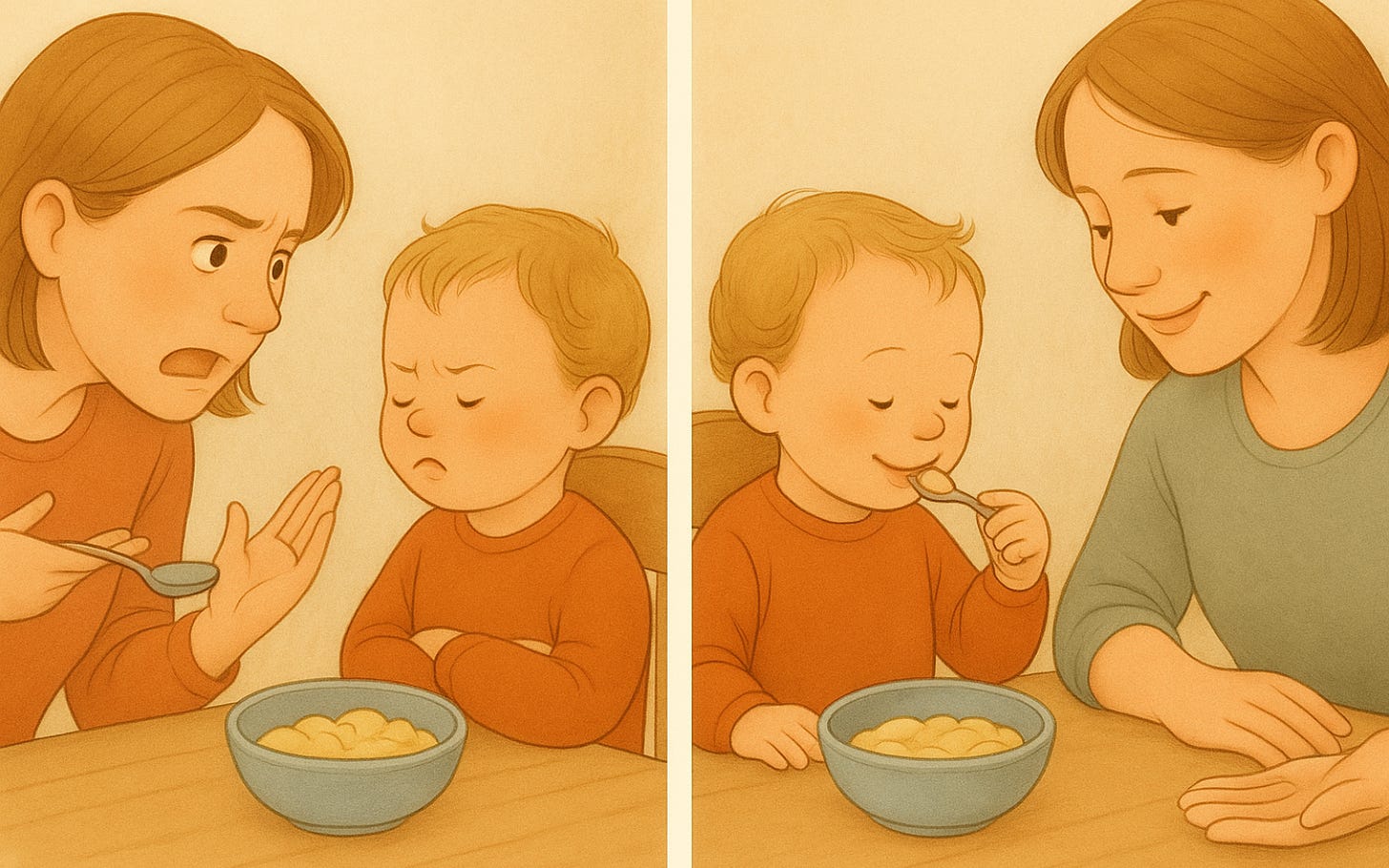"He doesn’t eat anything!" — How to stop fighting over food and start trusting your child.
What the Division of Responsibility is — and why this simple approach helps make mealtimes calmer and more connected.
It seems like food is just… food.
But for many families, mealtimes turn into real battles.
- He didn’t eat again.
- She only wants pasta!
- It’s the third night in a row — no dinner. What am I doing wrong?
If you’ve had these thoughts — you’re not alone.
Almost every parent has, at some point, felt stressed or anxious because their child “doesn’t eat well.”
But what if we looked at food differently?
Not as a checklist or a set of rules.
Not as a battlefield — but as part of the relationship.
A chance to build trust, not tension.
There’s one simple but powerful idea that can change the way you approach feeding:
The Division of Responsibility, first introduced by dietitian Ellyn Satter.
It helps parents let go of pressure and control — and helps children learn something even more important:
how to listen to their own bodies.
The Principle That Changes Everything
This idea has helped families all over the world.
And it’s beautifully simple:
The parent is responsible for:
- what is offered (the menu, the food on the table)
- when it’s offered (not grazing all day long)
- and where meals take place (in a calm setting, ideally together)
The child is responsible for:
- whether to eat
- and how much to eat.
Real-Life Examples
You’ve served broccoli, rice, and meatballs.
Your child eats only the rice — and that’s it.
Don’t bargain. Don’t rush to offer something else.
Just stay calm and trust their choice.
You offer breakfast — and they refuse.
Don’t push.
The next meal will come at its usual time. And that’s okay.
They won’t stay hungry for long.
Worried they don’t eat vegetables?
Keep offering — but without pressure.
Today they skipped the carrots.
Tomorrow, they might surprise you.
It’s not magic — it’s calm consistency.
Why It Works
Your child feels respected.
And that means:
— they learn to trust their body,
— try new foods without fear,
— and stay connected to hunger and fullness cues.
And you, as a parent, slowly let go of the anxiety.
Mealtimes stop being a battlefield.
They become something softer, calmer — a moment of connection, not control.
You’re still there — just with less pressure, and more trust.
You’re Not Alone
Sometimes it feels like we’re the only ones struggling at the table.
That other kids eat their veggies with a smile — while ours want nothing but pasta and bananas.
But the truth is: many parents go through this. You’re not alone. And you’re not doing it wrong. You’re learning — together with your child.
If this approach resonates with you — subscribe.
I write about feeding, behavior, and development — without fear, shame, or pressure. Just calm, care, and connection. New posts every week. Always from the heart.


